Today I posted this video compiling three recipes for Swedish Christmas classics made vegan and here you’ll find the recipe for lussekatter i.e. vegan saffron buns. This fluffy and comforting treat is something we usually eat here in Sweden on the 13th of December. On that day we celebrate Lucia which marks the start of the Christmas festivities. The word Lucia comes from the latin word lux which means light. That is exactly what we celebrate on that cold and dark December day while we eat lots of lussekatter and drink glögg which is Swedish for mulled wine.
My lussekatter or saffron buns are of course completely plant based and as with most of traditional recipes this means I have changed out some ingredients for others. Instead of dairy milk I have used Aito organic oat drink and to reply the egg wash I have simply brushed my buns with Aito oat for whipping. These exchanges make a world of difference for the animals and for sustainability purposes but does not affect the flavour. The flavour and texture stays beautifully saffrony, fluffy and moist.
Unfortunately I personally suffer from gluten intolerance and can only eat a little piece of this beautiful yellow buns as a main ingredient in making these buns. So for those of you who are coeliac or intolerant like myself this recipe will not be suitable for you. Aito’s organic oat drink is also not gluten free but most of their other products are like the ones I’ve used for my other recipes in the video. Hopefully you’ll want to try out these salted chocolate truffles or this delicious Christmas potato gratin instead if you cannot dive into baking these buns.
Malin x
Post in collaboration with Aito.
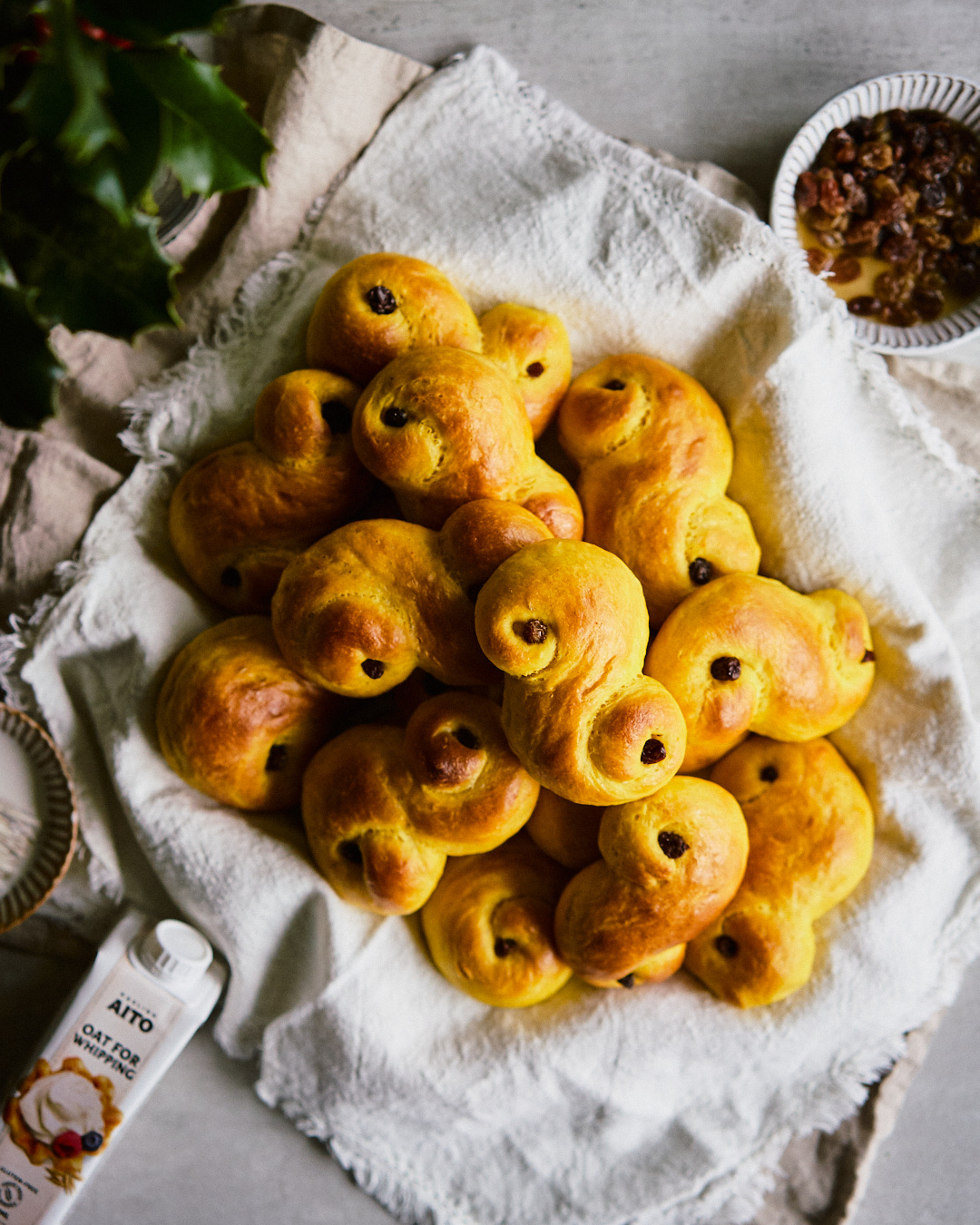

VEGAN SAFFRON BUNS / LUSSEKATTER
Makes 16 buns,
INGREDIENTS:
A handful of raisins (to be precise you will need 32)
1 grams of saffron, I used ground but strands are usually better quality
5 tbsp water
25 grams fresh yeast
1 cup oat drink
0,4 cup rapeseed/canola oil
0,4 cup cane sugar
A pinch of salt
3 cups all purpose wheat flour + extra for dusting
METHOD:
Pour 3 tbsp of your water over your raisins in a small bowl and set aside. Soaking your raisins like this will allow them to absorb moisture before you press them into your buns. This will ensure they don’t steal moisture from your buns and will keep them from burning in the oven.
Next up mix your ground saffron with the remaining water. If you prefer you could mix it into some rum which also allows the flavour of the saffron to develop. If you are using strands you could skip the water soak and instead use a pestle and mortar to combine the saffron with some of the sugar.
To start making the dough for the buns start by crumbling your yeast into a large mixing bowl and set aside.
Then heat your oil and oat drink in a sauce pan. You just want it to reach body temperature. You could test this by putting your finger into the liquid and it should feel neither cold or hot when you do so. If the liquid is too hot you could kill the yeast and if it is too cold it will take longer for the yeast to activate and rise your dough. If you have a thermometer you could use it and warm your liquid to 37 degrees celsius but this is not necessary, trust your instincts with the finger test.
Once the liquid is the right temperature pour some of it over your yeast and dissolve it into the liquid by stirring with a wooden spoon. You could also use your fingers if you prefer. Once dissolved add the remaining liquid and give it a mix.
Add your saffron mixture, sugar and salt and mix well to dissolve and integrate.
Finally add your flour little by little and mix it well into the liquid with a wooden spoon. After a while it will become a tacky and shaggy dough. This is when I like to use my hands to work the dough, this is a sticky job and takes about 10-15 minutes to reach a good result. If you have a standing mixer you could simply use that to combine your dough and this will take about 5 minutes. You want your dough to become elastic and for the gluten to develop. My dough is quite tacky and sticky so it will always feel sticky in your hands at this point but you should feel and see when your dough becomes more elastic. (See video for help.)
Once you’re happy with your dough simply shape it into a ball the best you can and leave it in the bowl. Dust with a little more flour and place a baking cloth over the top of the bowl.
Let the dough rise for 30 to 45 minutes or until it has doubled in size.
Prepare two lined baking sheets and once your dough has doubled in size you will want to prepare your baking surface as well by dusting it with some flour. A light layer of flour should be sufficient.
Place your dough onto the surface and give it a little knead to knock some of the air back within it. Use a knife or a dough scraper to split the dough into, more or less, four equal parts. Then split each part into four equal parts again to create sixteen pieces of dough for your buns. If you want them the exact size each should be roughly 60 grams.
Take one piece of dough into lightly floured hands and make a rough ball out of it and then start rolling it between your hands so that it becomes a sausage shape. Place the “sausage” onto a lightly floured surface and roll it out to become roughly 20-25 cm. Then curl the two ends in opposite directions towards the center of the length as to create a curly s-shape. You will want to do this with quite a firm hand and not use too much flour, just enough so the dough doesn’t stick to your hands or the surface.
Place your first lussekatt bun on the lined baking sheet and repeat with the remaining dough. Each baking sheet should have eight lussekatt buns when your finished. Place a baking cloth or clean dish towel over each sheet and leave somewhere warm.
Let the buns rise for another 30 minutes, or until they’ve roughly doubled in size, and preheat your oven to 225 degrees celsius.
Once you’re buns have risen the desired amount brush them gently with an oat based alternative to cream before placing one raisin at the centre of each curl in the buns, this makes two raisins per bun. Brushing the buns will ensure they stay moist and help them develop a lovely sheen when baking.
Finally bake your buns for 6-8 minutes in the centre of the oven. They should be a light golden brown when ready. Repeat with the second sheet,
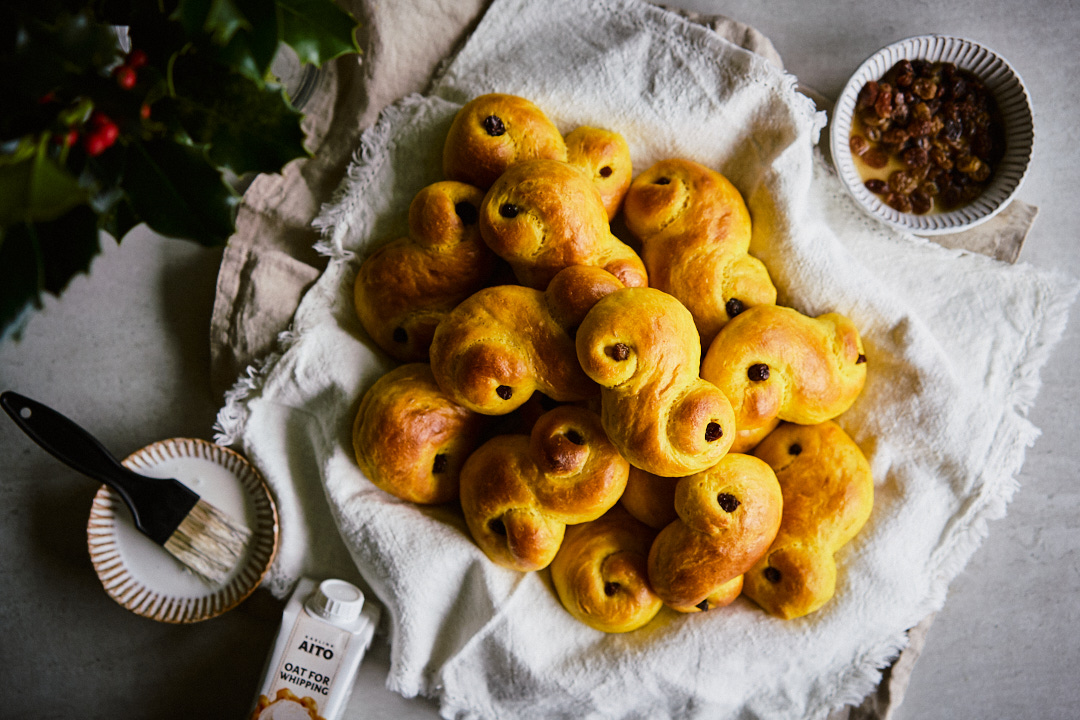


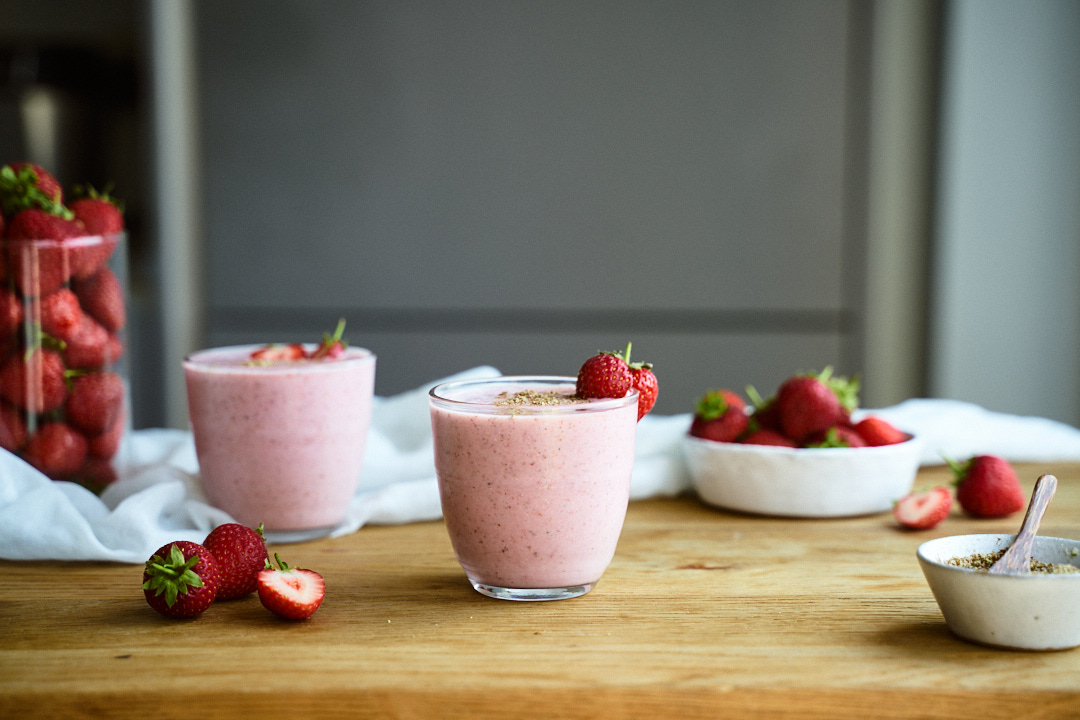
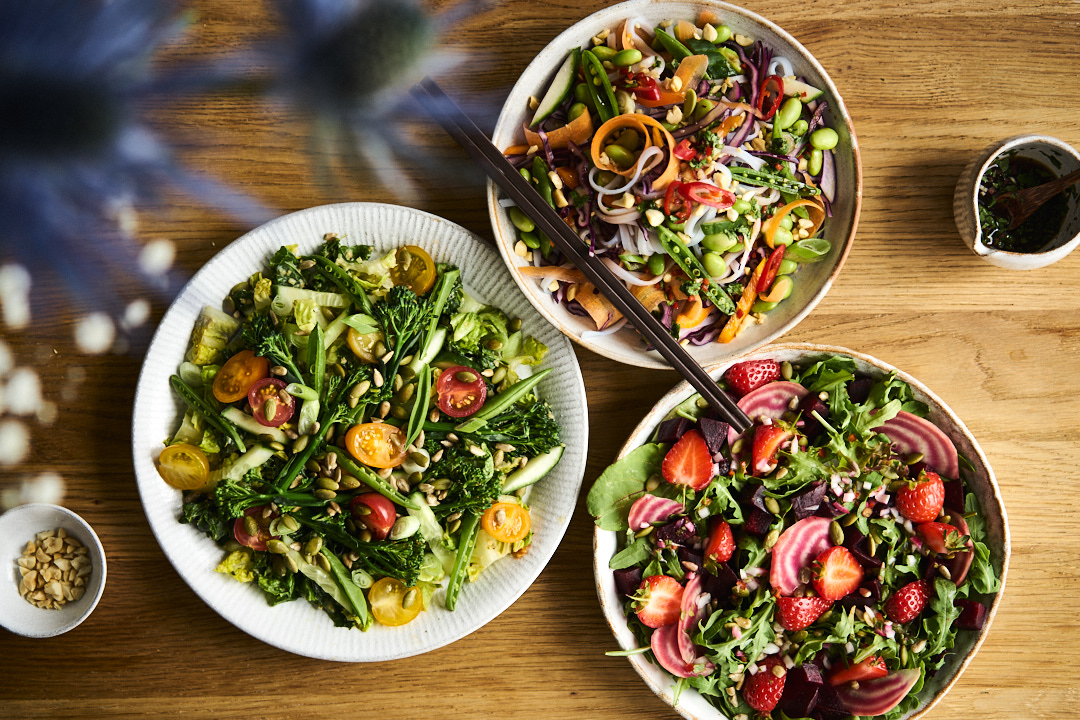

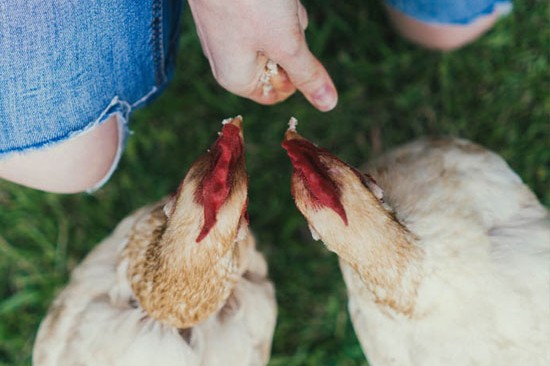


thank you thank you teacher
can you freeze these?
yes, that’s absolutely fine! I suggest freezing straight away after they’ve cooled, this way they stay the most moist. they might be a little more dry after defrosting though. while not very traditional Rob really likes to toast them after they’ve been in the freezer 🙂
Hi Malian,
These look amazing. Wondering if I can make it with regular yeast? How much should I use..?
Thanks,
Dhivya
Hi there 🙂
I am thinking that you mean dry yeast by normal yeast, is that right? I daren’t say for sure but some websites suggest diving the weight of the fresh yeast by 3 and there you should have how many g of active dry yeast to replace it with. Best to google it I think!
Thank you for getting back to me. MY 6 year old and I love your videos and we want to bake this.
Hej,
Tack så mycket för den fantastisk recept här!
How much is 0,4 cups to convert it in metric units? Is it 1/4 cup (0,25 cup = 50g), or as statet in the recipe 0,4 cups = 90g?
Hey,
Thank you for taking the time to write all this out. My questions; how much rum do you suggest to soak the saffron in? Although I have an ample supply of saffron threads – and, how much sugar should I mix with the saffron if I take the mortar and pestle approach?
Thank you,
hi aaron,
that’s my pleasure!
use the same amount of rum as I do water in this video recipe 🙂
and the aoumnt of sugar should stay the same whichever method you use!
good luck with the baking 🙂